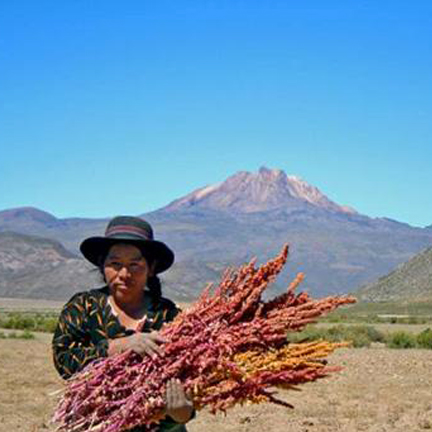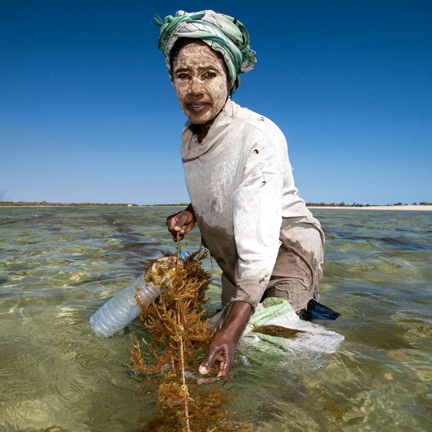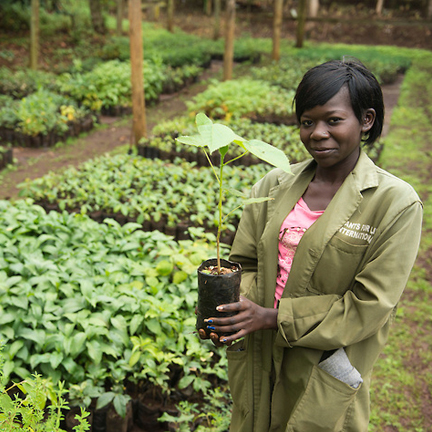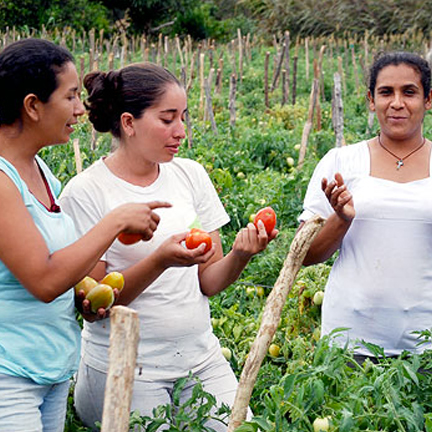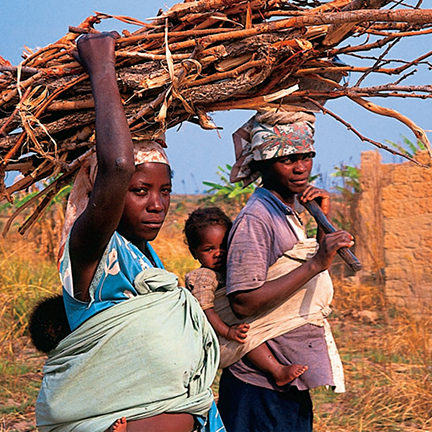Invest in Women to Tackle Climate Change and Conserve the Environment
Women bear the brunt of climate change, but they are the world’s best bet in the fight for a clean, healthy, and sustainable planet.
Climate change and environmental degradation represent a great threat to poverty reduction and to achieving the SDGs. They impact health, food security, nutrition, production, and people’s earnings. Yet given their traditional roles in agricultural production, and as the procurers of water, cooking fuel, and other household resources, women are not only well suited to find solutions to prevent further degradation and adapt to the changing climate – they have a vested interest in doing so. The first step towards tackling the challenges of climate change is empowering women to safeguard the environment.
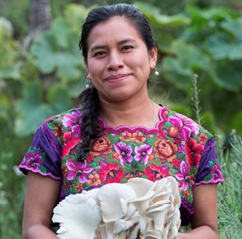
Need Evidence
and Strategies?
-

An estimated 4 million people die prematurely each year from household air pollution
-

18.8 million people were displaced because of climate related disasters in 2017
-

2.9 billion people in the developing world still use polluting fuels like wood, coal, and charcoal
-

Only 35% of environmental sector ministries have a gender focal point
-
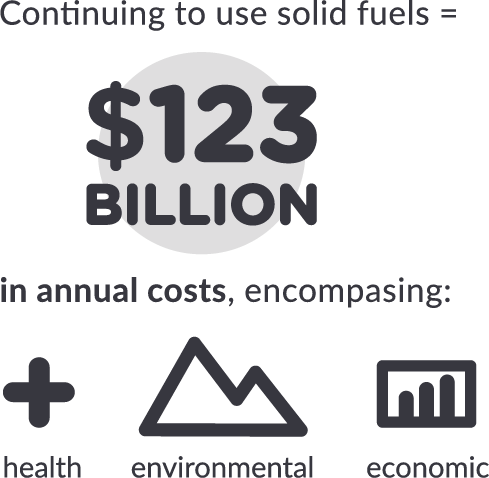
Continuing to use solid fuels = $123 billion in annual costs across health, environmental, and economic sectors.
Investing in girls and women creates a ripple effect that yields multiple benefits, not only for individual women, but also for families, communities, and countries. One study found that countries with higher female parliamentary representation are more prone to ratify international environmental treaties. Evidence also suggests that when women have secure rights and land access, they utilize resources sustainably. Including women in climate change mitigation will help guarantee enough clean air, safe drinking water, sufficient food, and secure shelter for future generation.
Solutions in Action
-
Applying Local Knowledge to Crop Production
A UN-funded project in the high plains of Bolivia relied upon traditional community knowledge of weather to improve crop production and avert risks imposed by climate change. The emphasis on applying women’s knowledge of the environment — with regard to proper crop and seed storage, for example — was key to the project’s success. As a result of this gender-sensitive collaboration, more than 100 context-specific agricultural technologies and practices were either introduced or re-introduced to the community to lessen the potential effects of climate change. -
Blue Ventures in Madagascar
Blue Ventures has been working in Madagascar to incorporate sexual and reproductive health services with sustainable coastal livelihood and resource management initiatives. This integrated approach addresses the interconnected challenges of poor health, unmet family planning needs, environmental degradation, and food insecurity in a holistic way. It enables communities to manage their resources sustainably, both now and for the future. These approaches enable couples to better provide for their families by decreasing crude birth rates, improving food security, and empowering women to play an impactful role in resource management. Since Blue Ventures began in 2007, it is estimated that over 1,125 unintended pregnancies have been averted within a population of 20,000. -
-
Climate-Smart Agriculture in Kenya
In 2011, a pilot project in Kenya focusing on female small-scale farmers and dairy farmers incorporated Climate-Smart Agriculture (CSA) as a means of improving yields, income, and wellbeing. Women in the Kamotony region, who were concerned about their economic stability, were trained in CSA practices and decided collectively to start a tree nursery. This tree nursery provided a new source of income from the sale of seedlings and tree cuttings; the women were able to invest in dairy production with the profits. By applying the CSA techniques, such as feed storage and fodder production, the women were able to increase dairy production. The women now report that their household food security, nutrition, and income have increased due to CSA practices. They also are able to fund their children’s education and healthcare without the economic difficultly that they previously faced. -
Crop Diversification in Nicaragua
With resources from a community fund, local women in Jinotega, Nicaragua conducted a risk mapping exercise to identify new solutions for improving food production. They then received training, seeds, and tools, and collectively decided how the agricultural land could be used differently. After five years the number of diversified plots in the community quadrupled, and crop production for household use increased five-fold. Within the same period, each farmer’s annual net earnings increased roughly six-fold. -
The Africa Adaptation Program (AAP)
The Africa Adaptation Program (AAP) addressed women’s roles in climate change in Nigeria by boosting their skills and knowledge with regard to climate change impacts, policy, financing, and negotiations. They focused on developing women’s leadership in key government ministries as it relates to climate change. Many of the countries involved in the AAP program from 2008-2012 worked to revise budgeting processes so that they included funding focused specifically on the gender-specific needs of many women regarding climate change mitigation and adaptation.
Policy Asks
-
Ensure female involvement, including indigenous women and grassroots groups, in climate change negotiations and resource management.
-
Develop policies to address climate change that recognize gender-sensitive impacts, provide women with access to resources, and give them opportunities to participate in mitigation and adaptation processes.
-
Ensure key decision-makers understand how environmental degradation and climate change affect women differently than men.
-
Invest in technologies and initiatives to enhance sustainable and renewable energy sources that reflect women’s knowledge, needs, and roles, while incorporating indigenous expertise and traditional practices.
-
Include women in the creation of policies and strategies around environmental protection including disaster response; building resilience; securing land and inheritance rights, food, and resources; and ending energy poverty.
-
Integrate environmental conservation strategies within family planning and women’s health programming and vice versa.
-
Promote gender-responsive approaches to climate financing.
Partner Resources
-
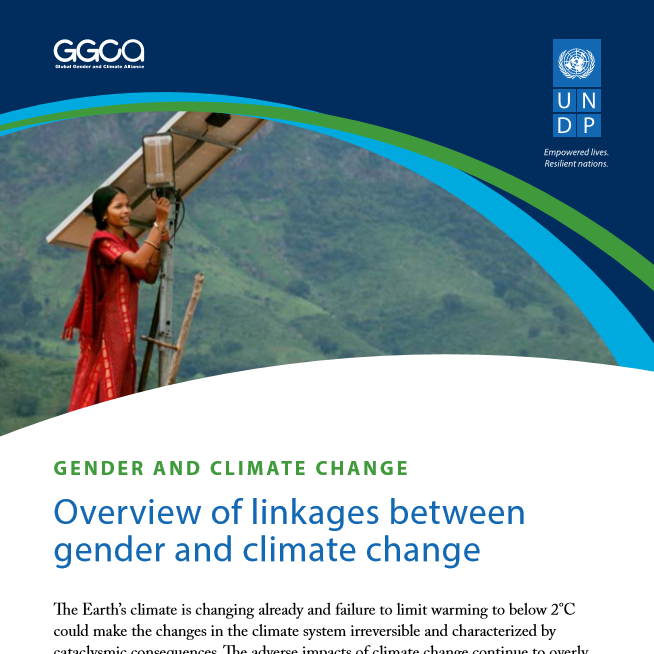
United Nations Development Programme
UNDP presents updated versions of 12 training modules and issue briefs on gender dimensions of climate change covering a range of themes and sectors.
-
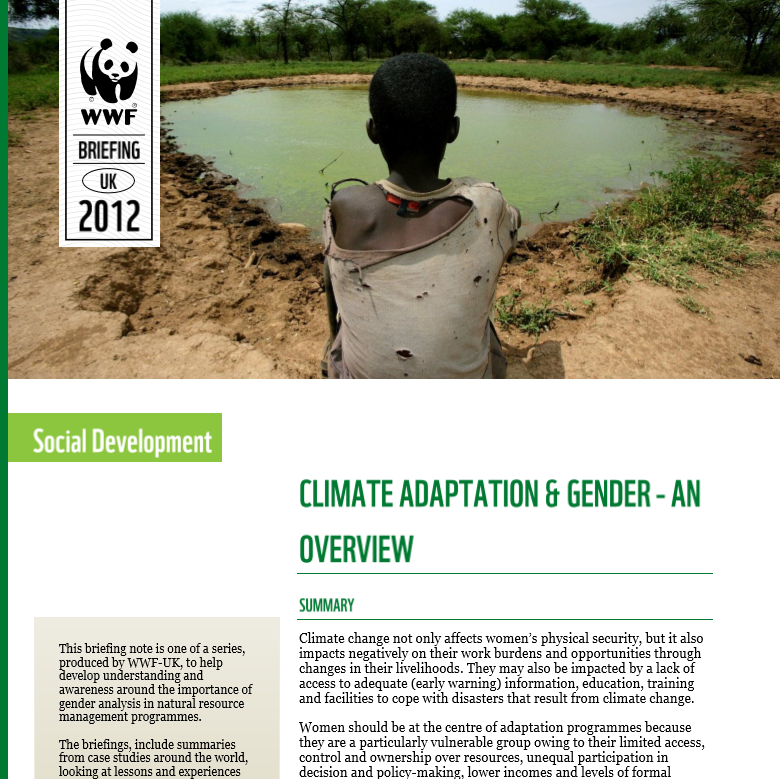
World Wide Fund for Nature
This brief includes case studies around the world, looking at lessons and experiences from integrating gender perspectives into climate adaptation.
-
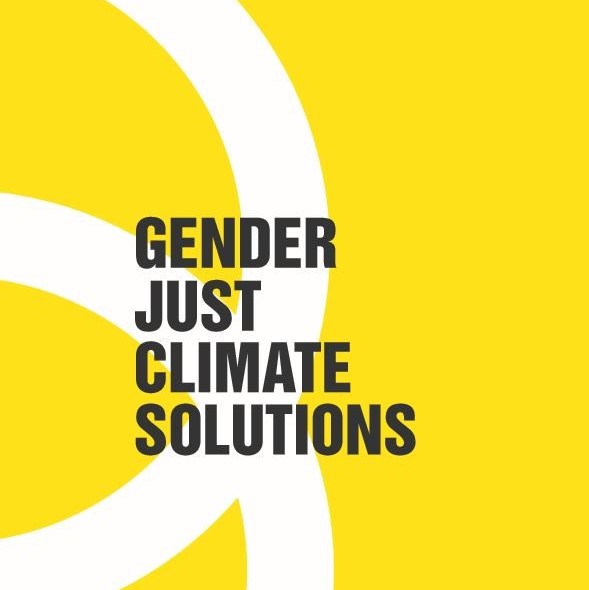
The Women and Gender Constituency (WGC)
The Gender Just Climate Solutions in this publication are aimed at making gender equality and women’s rights central to just climate action.

